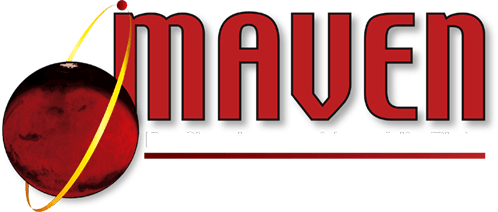
NASA has three orbiters circling the Red Planet, each equipped with special cameras and other atmospheric instruments. Additionally, NASA’s Curiosity rover has begun to see an increase in dust at its location in Gale Crater.
“This is the ideal storm for Mars science,” said Jim Watzin, director of NASA’s Mars Exploration Program at the agency’s headquarters in Washington. “We have a historic number of spacecraft operating at the Red Planet. Each offers a unique look at how dust storms form and behave — knowledge that will be essential for future robotic and human missions.”
Dusty With a Chance of Dust
Dust storms are a frequent feature on Mars, occurring in all seasons. Occasionally, they can balloon into regional storms in a matter of days, and sometimes even expand until they envelop the planet. These massive, planet-scaled storms are estimated to happen about once every three to four Mars years (six to eight Earth years); the last one was in 2007. They can last weeks, or even months at the longest.
The current storm above Opportunity, which is still growing, now blankets 14 million square miles (35 million square kilometers) of Martian surface—about a quarter of the planet.
All dust events, regardless of size, help shape the Martian surface. Studying their physics is critical to understanding the ancient and modern Martian climate, said Rich Zurek, chief scientist for the Mars Program Office at NASA’s Jet Propulsion Laboratory in Pasadena, California.
“Each observation of these large storms brings us closer to being able to model these events—and maybe, someday, being able to forecast them,” Zurek said. “That would be like forecasting El Niño events on Earth, or the severity of upcoming hurricane seasons.”
The thin atmosphere makes these storms vastly different from anything encountered on Earth: Despite the drama of “The Martian,” the most powerful surface winds encountered on Mars would not topple a spacecraft, although they can sand-blast dust particles into the atmosphere.
Teamwork
Members of NASA’s spacecraft “family” at Mars often help each other out. The agency’s orbiters regularly relay data from NASA’s rovers back to Earth. Orbiters and rovers also offer different perspectives on Martian terrain, allowing their science to complement one another.
The Mars Reconnaissance Orbiter has a special role, acting as an early warning system for weather events such as the recent storm. It was the orbiter’s wide-angle camera, called the Mars Color Imager, that offered the Opportunity team a heads up about the storm. This imager, built and operated by Malin Space Science Systems in San Diego, can create daily global maps of the planet that track how storms evolve, not unlike weather satellites that track hurricanes here on Earth.
NASA’s two other orbiters—2001 Mars Odyssey and MAVEN—also provide unique science views. Odyssey has an infrared camera called THEMIS (Thermal Emission Imaging System) that can measure the amount of dust below it; MAVEN is designed to study the behavior of the upper atmosphere and the loss of gas to space.
Science happens on the ground as well, of course. Despite being on the other side of the planet from the evolving dust storm, NASA’s Curiosity rover is beginning to detect increased “tau,” the measure of the veil of dusty haze that blots out sunlight during a storm. As of Tuesday, June 12, the tau inside Gale Crater was varying between 1.0 and 2.0—figures that are average for dust season, though these levels usually show up later in the season.
Fortunately, Curiosity has a nuclear-powered battery. That means it doesn’t face the same risk as the solar-powered Opportunity.
The Next Big One?
Since 2007, Mars scientists have been patiently waiting for a planet-encircling dust event—less precisely called a “global” dust storm, though the storms never truly cover the entire globe of Mars. In 1971, one of these storms came close, leaving just the peaks of Mars’ Tharsis volcanoes poking out above the dust.
The most recent dust storm is the earliest ever observed in the northern hemisphere of Mars, said Bruce Cantor of Malin Space Science Systems, deputy principal investigator for the Mars Color Imager. But it could take several more days before anyone can tell whether the storm is encircling the planet.
If it does “go global,” the storm will offer a brand new look at Martian weather. Four spacecraft stand ready to collect the science that shakes out.
JPL, a division of Caltech in Pasadena, California, manages the Mars Exploration Rover mission; the Mars Science Laboratory/Curiosity rover; the Mars Reconnaissance Orbiter Project; and the 2001 Mars Odyssey orbiter for NASA’s Science Mission Directorate, Washington. NASA’s Goddard Space Flight Center in Greenbelt, Maryland, manages the MAVEN project for NASA’s Science Mission Directorate, Washington. MAVEN’s principal investigator is based at the University of Colorado Boulder’s Laboratory for Atmospheric and Space Physics. Lockheed Martin Space Systems, Denver, is the prime contractor for the Odyssey, MRO and MAVEN projects, having developed and built all three orbiters. Mission operations are conducted jointly from Lockheed Martin and from JPL for Odyssey and MRO, and jointly with the GSFC for MAVEN. The Thermal Emission Imaging System (THEMIS) was developed by Arizona State University, Tempe, in collaboration with Raytheon Santa Barbara Remote Sensing. The THEMIS investigation is led by Philip Christensen at Arizona State University.
For more updates about the Martian dust storm visit:
https://mars.nasa.gov/weather
[addthis]

